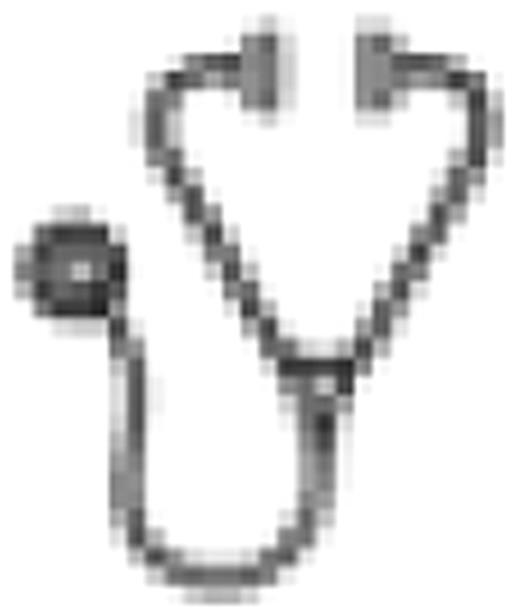Abstract
Single nucleotide polymorphisms (SNPs) in the gene encoding multiple drug resistance protein 1 (ATP-binding cassette, sub-family C member 1 (ABCC1) influence its ability to act as a mediator of anthracycline resistance. The same is true for SNPs in P-glycoprotein 1 (ATP-binding cassette, sub-family B member 1 (ABCB1)), and the latter have been associated with outcome in newly diagnosed patients with multiple myeloma treated with anthracycline-based therapy. We therefore sought to evaluate the role of SNPs in ABCC1 and ABCB1 in the outcome of patients with relapsed and/or refractory multiple myeloma.
The DOXIL-MMY-3001 study was an international, randomized, phase III trial comparing the efficacy of single-agent bortezomib to that of bortezomib with pegylated liposomal doxorubicin (PLD) in patients with relapsed and/or refractory multiple myeloma. Patients treated with bortezomib received this proteasome inhibitor at 1.3 mg/m2 as an intravenous push on days 1, 4, 8, and 11 of every 21-day cycle, while patients on the combination arm received this dose and schedule of bortezomib along with PLD as an infusion at 30 mg/m2 on day 4. Genomic DNA samples were obtained from all subjects in the intention-to-treat cohort who consented to DNA testing under Part 1 of the pharmacogenomic component of the clinical trial protocol. Samples that produced at least one useable genotype were included in this pharmacogenomic analysis. SNPs in ABCC1 (R723Q) and ABCB1 (1236 C>T, 2677 G>W (W = T or A), and 3435 C>T) were correlated with the overall response rate (complete + partial), time to progression, progression-free survival, and overall survival.
Genetic transmission patterns differ among racial groups, and since usable genotype and clinical data were available for 301 subjects, 279 of whom were Caucasians, this analysis focused on that group. The ABCC1 gene polymorphism R723Q was not represented in the bortezomib arm, and found in 5 subjects (3.5%) who received bortezomib + PLD. Its presence was significantly associated with a longer time to progression (median of 330 days vs. 129 days; p = 0.0008), a longer progression-free survival (median of 338 days vs. 129 days p = 0.0006), and a superior overall survival (p = 0.0045) in these patients. The ABCB1 gene polymorphism at 3435 (C>T) was associated with progression-free survival (p = 0.0578), response rate (p = 0.0782) and time to progression (p = 0.0923) in patients receiving bortezomib + PLD, though not at the level of statistical significance, and no correlation was found in the bortezomib alone arm. However, in a recessive genetic model, the ABCB1 gene polymorphism at 3435 T allele was significantly associated with a better clinical outcome, specifically time to progression (p = 0.0405), and progression-free survival (p = 0.0186) in patients receiving bortezomib + PLD. Haplotype analysis indicated that the three most frequent haplotypes for ABCB1 may have been associated with response rate in subjects with relapsed multiple myeloma who received bortezomib + PLD treatment (p = 0.0775), though not at the level of statistical significance. Diplotypes that contained 3435T may have been associated with a superior time to progression (p = 0.0819) and progression-free survival (p = 0.0891) in subjects with relapsed multiple myeloma who received bortezomib + PLD when compared to the most frequent diplotype containing 3435C, though not at the level of statistical significance.
These findings indicate a potential role for SNPs in both ABCC1 and ABCB1 in modulating the long-term outcome of patients with relapsed and/or refractory multiple myeloma treated with the combination of bortezomib + PLD. Moreover, they support additional prospective studies to determine if such data could be incorporated into an algorithm by which therapy in the relapsed and/or refractory setting could be tailored to each individual patient's own genetic make-up.
Ricci:Centocor Ortho Biotech Inc.: Employment. Cohen:Johnson & Johnson Pharmaceutical Research and Development: Employment. Favis:Johnson & Johnson Pharmaceutical Research and Development: Employment. Huang:Centocor Ortho Biotech Inc.: Employment. Rackoff:Centocor Ortho Biotech Inc.: Employment. Zhuang:Centocor Ortho Biotech Inc.: Employment. Sonneveld:Centocor Ortho Biotech Inc.: Membership on an entity's Board of Directors or advisory committees.

This icon denotes an abstract that is clinically relevant.
Author notes
Asterisk with author names denotes non-ASH members.

